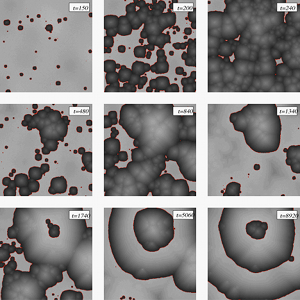Random perturbations of dynamical systems

Dynamical systems are often subject to random perturbations or noise. Even when the noise amplitude is small, it has a profound influence on the dynamics on the appropriate time-scale. At a first sight one might think that this influence happens at such a long time-scale that it is rarely of practical importance. That this is an incomplete view may be understood by noticing that most physical processes will not happen at zero temperature when thermal noise is absent. In reality nature presents one with a very wide range of temporal scales. The small noise induces events which are rare with respect to the internal clock of the system, but this clock can be very fast, and the processes of interest to our daily lives are mostly on the order of seconds or longer. This leaves plenty of room for rare events caused by thermal noise to make their appearance. In fact, phenomena like nucleation events during phase transitions, chemical reactions, conformation changes of biomolecules, bistable behaviors in genetic switches, or regime changes in climate are just a few examples of rare events among many others.
Traditionally the methods of choice for a quantitative understanding of the effect of noise has been Monte Carlo or direct simulation of Langevin equations. When the noise is small, which is the case of interest here, these methods become prohibitively expensive, due to the presence of two disparate time-scales: the time-scale of the deterministic dynamics and the time-scale between the rare events caused by the noise. Noticing this difficulty, alternative theories and numerical methods have been proposed.
This section contains our papers in the context of dynamical phase transformations; papers in which limiting dynamics are derived for various systems subject to random perturbations; and papers on self-induced stochastic resonance (SISR), a phenomenon similar to standard stochastic resonance but in which the external forcing is replaced by some internal reset mechanism.